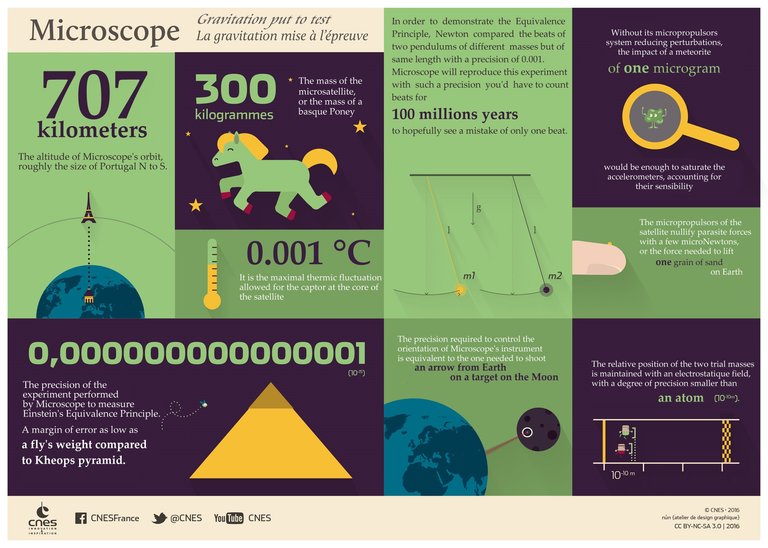The mission Microscope aims to test the principle of equivalence of Einstein in space. The stakes are enormous: if it were violated, it would open a window to a new physics and perhaps allow us, in particular, to unlock the secrets of dark matter and dark energy. But, for the time being, Einstein's principle of equivalence resists the test ...
The historian of science and physicist Gerald Holton, known for his book The Scientific Imagination, reported in one of his books, this statement of Einstein: "The best thing about a physical theory is to show the way to the establishment of a more inclusive theory, in which she lives as a borderline case ". Thus, a little over a hundred years ago, Albert Einstein's theory of general relativity dethroned Newton's theory of gravitation.
In the same way, the mission Microscope (Microsatellite with compensated drag for the observation of the principle of equivalence), of the Cnes, seeks today to make the same fate to the theory of Einstein by detecting a violation of its principle equivalence.
Indeed, to observe this violation could constitute a revolution opening a window on a new physics. The latter would then give us one of the keys to construct a quantum theory of gravitation and, perhaps, allow us to unlock the secrets of dark matter and dark energy in cosmology. On Monday, December 4, 2017, Cnes officially presented the first results of the Microscope mission: Einstein's principle of equivalence has withstood the test ... for now.

A mission to go beyond and better understand the standard model
The Microscope mission is developed and conducted by Onera and Géoazur teams (CNRS, OCA, Côte d'Azur University, IRD) with the contribution of CNES and Zentrums für Angewandte Raumfahrttechnologie und Mikrogravitation (Zarm). Futura had already presented it to you in an interview given to us by Pierre Touboul, Onera researcher and principal investigator of this mission (see the article below).
The goal is: to test one of the hypotheses used by Einstein to discover and build his relativistic theory of gravitation, the general relativity, which we celebrated the centenary at the end of 2015. In this case , the objective was to push back - by an order of magnitude (a factor of 10), first, then by two (a factor of 100) - the precision of a measure relating to the validity of the famous principle of equivalence .
As explained in the video of Cnes above, this principle of equivalence was already known Galileo and it simply states that bodies fall into the field of gravitation in the same way, regardless of their masses and compositions. However, some of the theories proposed to extend the standard model of particle physics and attempt to better understand the origin of its free parameters (whose values are not explained in this model, such as the masses of quarks and leptons or the value of the electric charge), and even to unify the force of gravitation with these extensions to construct a theory of all fields of matter and forces known in the observable universe today, predict qualitatively, and sometimes in a generic way, a violation of this principle of equivalence.
There are as yet no robust and accurate predictions of the extent of the violation of the principle of equivalence, except that it must be very weak, at least for having so far escaped detection. . Scientists are therefore reduced to patiently and methodically pushing the boundaries of a known territory hoping to someday fall on a hypothetical treasure whose existence seems credible.
Congratulations @aymericfc! You received a personal award!
Click here to view your Board of Honor
Do not miss the last post from @steemitboard:
Congratulations @aymericfc! You received a personal award!
You can view your badges on your Steem Board and compare to others on the Steem Ranking
Vote for @Steemitboard as a witness to get one more award and increased upvotes!